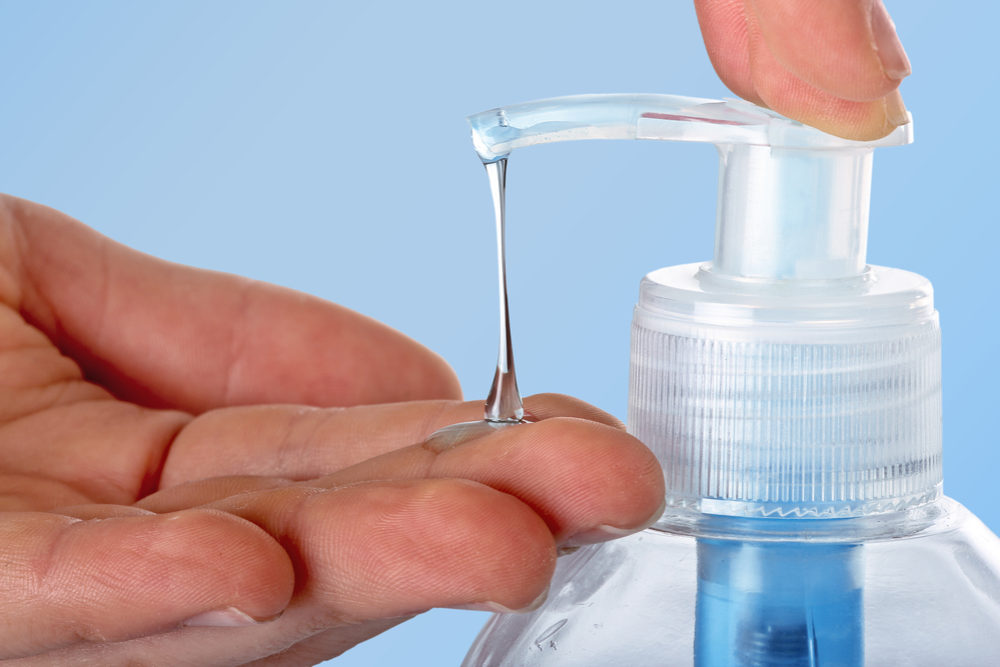Hand Sanitizer Makers Must Give FDA More Data on Safety, Effectiveness Under New Rule

Federal regulators are calling for manufacturers to provide new information on the safety of hand sanitizers designed for consumer use.
A proposed ruling was issued by the FDA on June 29, requesting information to address “data gaps” for consumer hand sanitizers. Filling the data gaps would require additional scientific data to support the safety and effectiveness of certain active ingredients used in topical hand sanitizers, including those marketed over-the-counter (OTC).
The agency is specifically requesting manufacturers provide data for three active ingredients, alcohol ethanol or ethyl alcohol, isopropyl alcohol, and benzalkonium chloride. Since 2009, about 90% of hand sanitizers use ethanol or ethyl alcohol as the active ingredient.

Did You Know?
Millions of Philips CPAP Machines Recalled
Philips DreamStation, CPAP and BiPAP machines sold in recent years may pose a risk of cancer, lung damage and other injuries.
Learn MoreThe FDA indicates that the request for data is designed to lead the manufacturers to demonstrate the active ingredients used in hand sanitizers are generally recognized as safe and effective to reduce bacteria on the skin. The agency said the request does not imply the products are ineffective or unsafe for consumer use, the FDA simply wants to ensure “regular use of these products does not present unknown safety and efficacy concerns.”
“The proposed rule seeks to ensure that the agency’s safety and effectiveness evaluations and determinations for these consumer antiseptic rub active ingredients are consistent, up-to-date and appropriately reflect current scientific knowledge and increasing use patterns,” according to the press release.
The request for data comes more than a year after the agency requested data on hand sanitizers and antiseptics used in consumer and professional healthcare settings.
Antiseptic Concerns
The FDA began regulating topical antiseptics in the 1970s. However, several things have changed since, including how often hand sanitizers are used today, new technology that can detect low levels of antiseptics in the body, the FDAs safety standards and scientific knowledge about the impact of widespread antiseptic use. The proposed ruling hopes to fill the gaps in those areas.
Hand sanitizers are intended to be used when soap and water are not available. It is left on the hands and not rinsed off with water. Millions of Americans use hand sanitizers daily, sometimes multiple times a day, to reduce bacteria. The frequency of use must be investigated to determine if this is safe for consumers.
The U.S. Centers for Disease Control and Prevention (CDC) warns that washing with soap and running water is one of the most important steps to avoid getting sick and prevent spreading infections to others. However, if soap and water are not available the agency recommends alcohol-based hand sanitizers that are at least 60 percent alcohol.
The new rule does not call for hand sanitizers to be removed from the market. If hand sanitizer manufacturers want to keep marketing their products they will need to provide additional data, including data that evaluates absorption of the skin.
The agency also aims to gather long-term data on the safety of daily, repeated exposure to these ingredients and use of the products by pregnant women and children.
“These products provide a convenient alternative when hand washing with plain soap and water is unavailable, but it’s our responsibility to determine whether these products are safe and effective so that consumers can be confident when using them on themselves and their families multiple times a day,” said Janet Woodcock, M.D., director of the FDA’s Center for Drug Evaluation and Research. “To do that, we must fill the gaps in scientific data on certain active ingredients.”
Some data suggests systemic exposure to the active ingredient is higher than previously believed, yet more information is needed about the effects of repeated exposure to determine if that type of exposure is safe.
The proposed ruling will be available for public comment for 180 days.
Get more articles like this sent directly to your inbox.
"*" indicates required fields





0 Comments